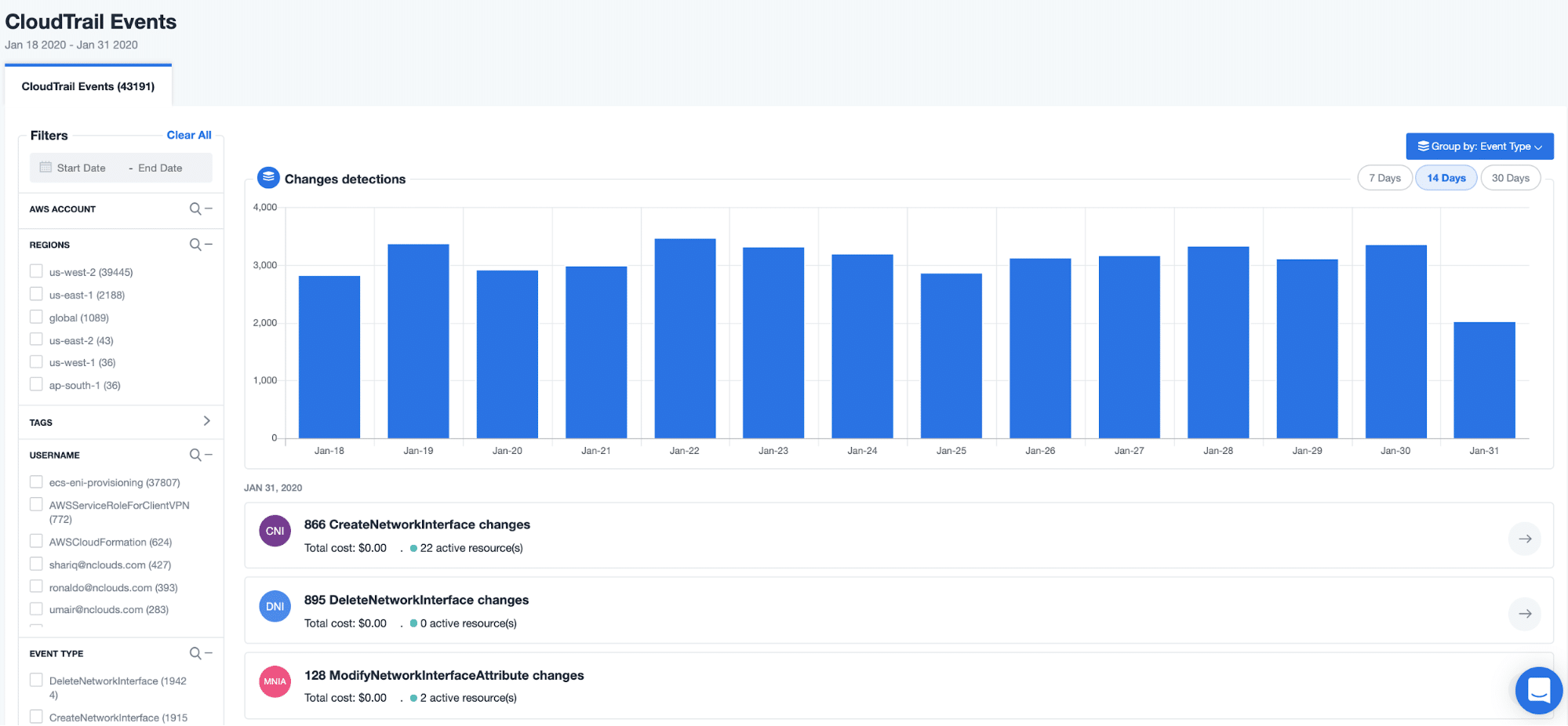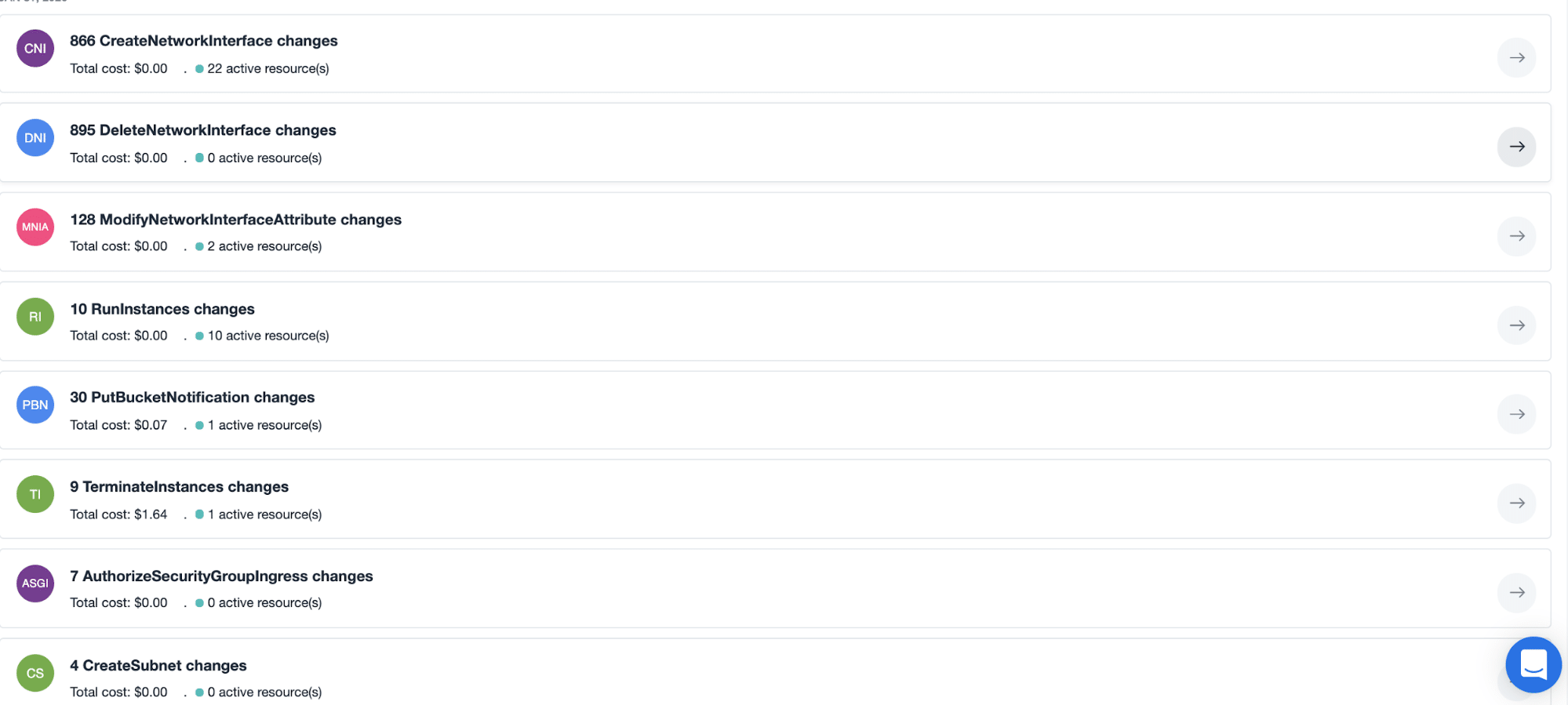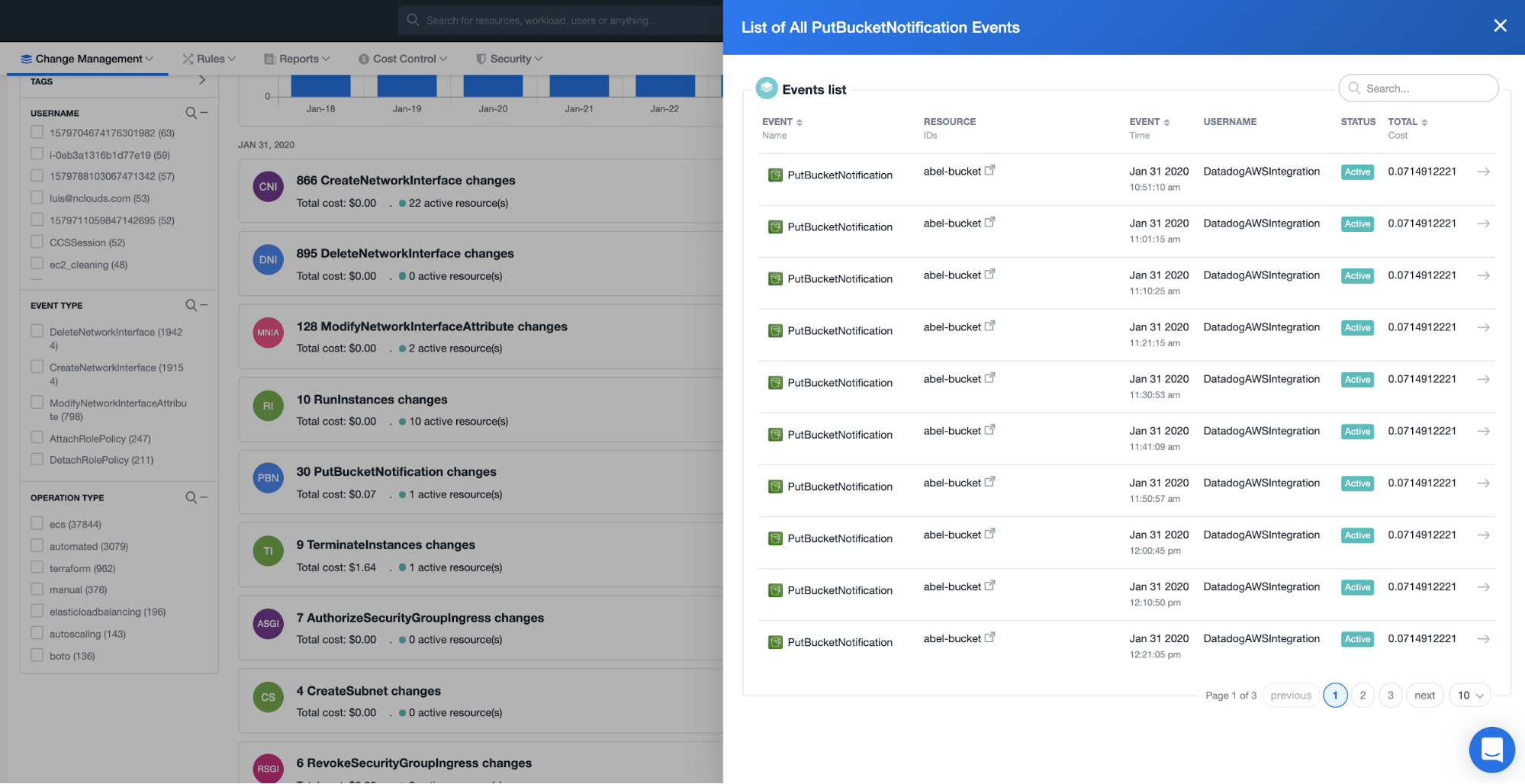- Blog
- Change Management
- How to Use nOps’ Dashboard to Amp the Value of AWS CloudTrail
How to Use nOps’ Dashboard to Amp the Value of AWS CloudTrail
With AWS cloud, teams can acquire cloud services with and without the participation of IT, leading to a dramatic increase in the volume, velocity, and complexity of IT service requests. As a result, new services are often created without any change management process. Without a change management process in place, organizations risk impact to the business in key areas of agility, incident remediation, cost, compliance, and security. A change could be as small as increasing Amazon Elastic Block Store (Amazon EBS) volume size or creating a new AWS ENI (Elastic Network Interface). These changes can go on and on, so it’s critical to have visibility to changes in your AWS infrastructure to manage change in a more appealing and cleaner user interface.
AWS CloudTrail to the rescue
AWS CloudTrail is an indispensable service for your AWS account to manage governance, compliance, operational auditing, and risk auditing. Using nOps, you can monitor AWS CloudTrail across regions and projects. You receive a real-time notification if AWS CloudTrail is disabled and an audit trail for your cloud infrastructure.
We’ve learned that a lot of users find it hard to read or draw meaning from all the data in AWS CloudTrail – it’s a lot. Most of the time, users go through each event to obtain insights on who changed what, at what time. This process can be painstaking when you have to go through hundreds, thousands, or even more events that occur within your AWS account each day.
nOps’ dashboard for AWS CloudTrail practically makes AWS CloudTrail run on steroids and acts as a beautiful makeover of the comprehensive but often overwhelming and not-so-intuitive data provided by native AWS CloudTrail. You can view changes going on across all resources and services in your AWS infrastructure, such as the number of changes that occurred in your infrastructure within a day, aggregated changes per resource, and how many AWS ENIs were deleted (detailing when and by whom the deletions were made).
Filters
In addition to providing visibility to changes, nOps gives you the options to drill down and filter through all the data that you can see on the dashboard. You can filter events by region, date, username, event type, and operation type, making it easy to sift through the vast amount of data within the events.
Change Grouping
Change across the infrastructure can happen in multiple resources. The nOps dashboard for AWS CloudTrail helps to group changes based on resources. The snapshot below shows that nine instances were terminated. This kind of insight cannot be obtained from native AWS CloudTrail. Such insights can help senior managers to examine changes by resource.
As illustrated below, it also shows that 30 PutBucketNotification changes occurred, and you can click on it to get details on the notifications.
Frequently asked questions:
Q: What is AWS CloudTrail?
A: AWS CloudTrail is a service that provides governance, compliance, operational auditing, and risk auditing of your AWS account. It records activity made on your account and delivers log files to your Amazon S3 bucket.
Q: What does AWS CloudTrail track?
A: AWS CloudTrail tracks the event history of your AWS account activity, including actions taken through the AWS Management Console, AWS SDKs, command line tools, and other AWS services.
Q: What search filters can I use to view my account activity?
A: You can specify Time range and one of the following attributes: Event name, User name, Resource name, Event source, Event ID, and Resource type.
In conclusion
nOps’ dashboard for AWS CloudTrail presents the events captured by AWS CloudTrail in a visually appealing and user-friendly form. nOps makes it easier to derive data-driven insights from changes across all resources and services in your AWS infrastructure that can drive up your costs or impact security, and take immediate action as necessary.
Want to start gaining data-driven insights on changes across all resources and services in your AWS infrastructure that can drive up your AWS costs or impact security? here here to get started with a free 14-day trial of nOps (or click here to sign in to nOps if you’re already a user) and use nOps to amp up the value and usability of the awesome detail provided by AWS CloudTrail.









